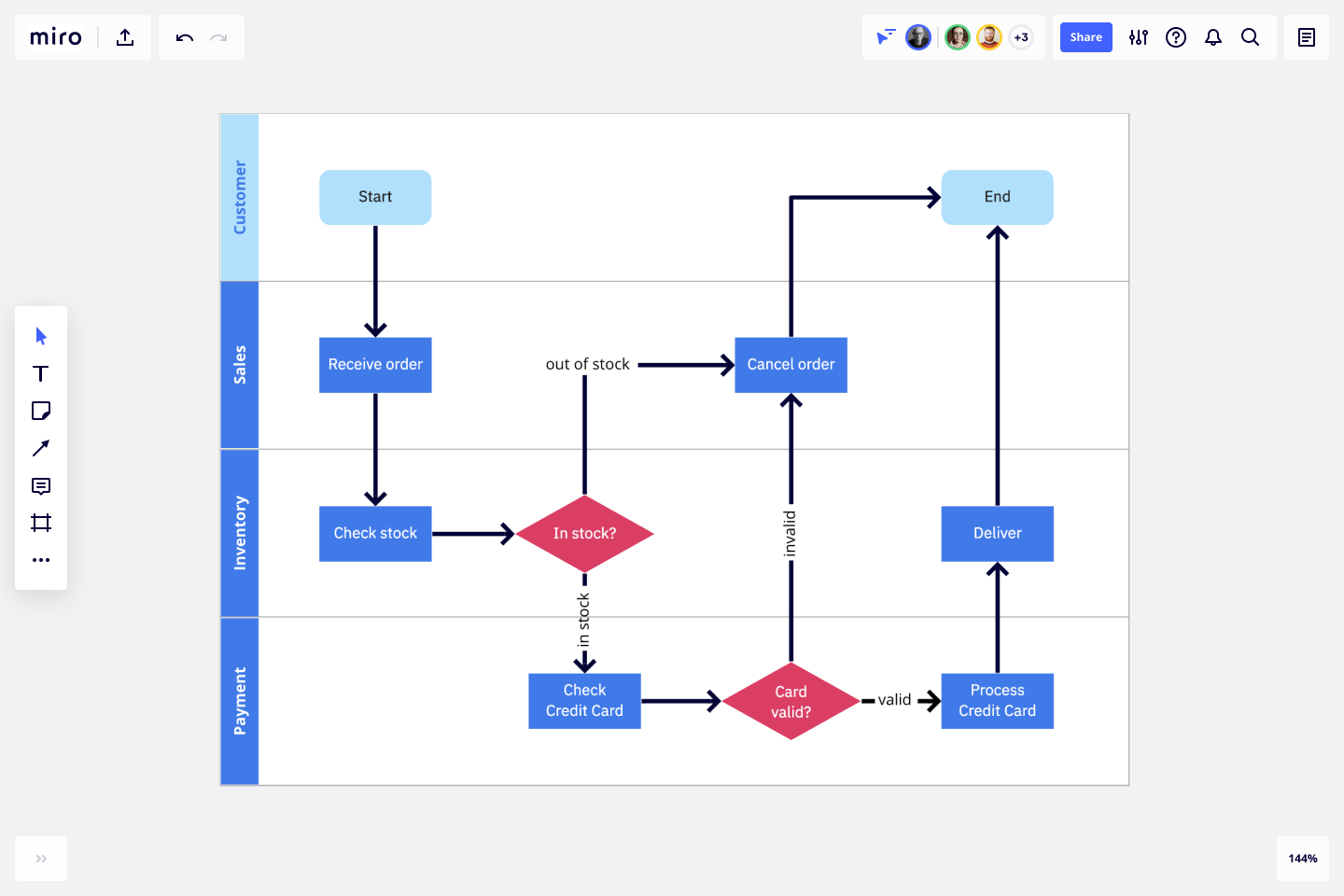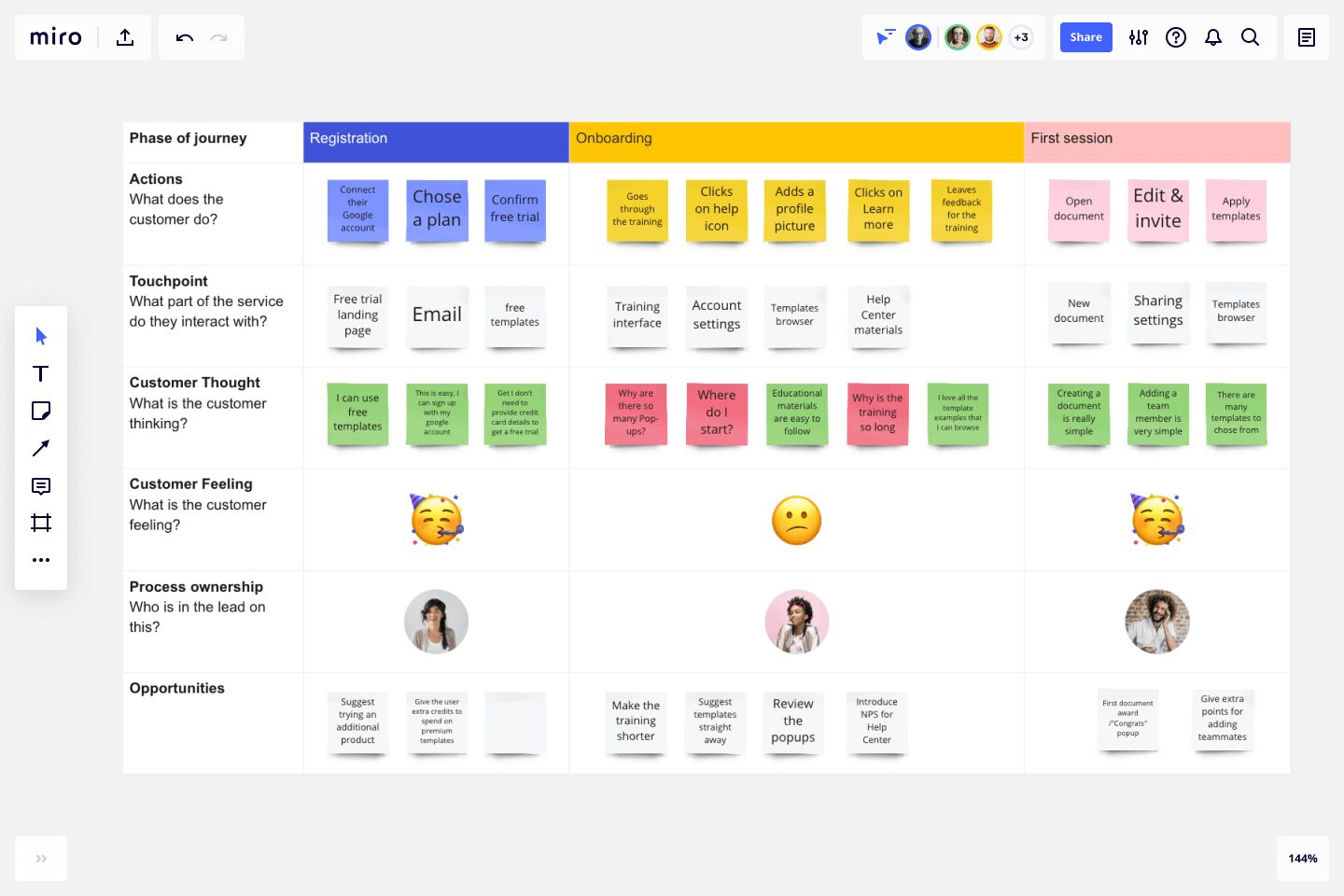

- #Miro templates pdf#
- #Miro templates software#
 X-as-a-Service, Collaboration and Facilitation interaction modes. An undefined team type shape can be used to represent a team that currently has no team type determined. All shapes for the four fundamental team types (Stream-aligned, Enabling, Complicated Subsystem, and Platform). The following team interaction modelling shapes are available: Recreating the dots in different diagramming tools was problematic so this was changed to use a circle. The Facilitation interaction mode is a plain circle instead of a circle with dots. Recreating the hatching in different diagramming tools was problematic so this was changed to use a parallelogram. The Collaboration interaction is a parallelogram instead of a hatched square. Second, the shape representing the X-as-a-Service interaction in the book was very difficult to re-create in a number of different diagramming tools using a simple triangle makes this much easier. First, the shape defined in the book does not indicate the direction of the interaction being provided the point of the triangle now determines this (the triangle points towards the "customer" in the relationship). The reason for the difference here is two-fold. The X-as-a-Service interaction is a grey triangle instead of two white bars joining the two teams. There are a number of reasons for this which are explained below. You may notice that there are some clear differences between the shapes shown above and those you may have previously seen in the book. The image below is an example of the shapes you may have seen in the book. Key differences from the shapes in the book The following images were generated using this color blindness simulator: Normal X-as-a-Service should be represented with a triangle, with the point of the triangle indicating the direction of the service being provided. Facilitation should be represented using a circle. Collaboration should be indicated using a parallelogram. An Undefined Team Type team should always be horizontally aligned with rounded corners and dotted border. Complicated subsystem teams should always be an octagon. Enabling teams should always be vertically aligned with rounded corners. Stream-aligned teams should always be horizontally aligned with rounded corners.
X-as-a-Service, Collaboration and Facilitation interaction modes. An undefined team type shape can be used to represent a team that currently has no team type determined. All shapes for the four fundamental team types (Stream-aligned, Enabling, Complicated Subsystem, and Platform). The following team interaction modelling shapes are available: Recreating the dots in different diagramming tools was problematic so this was changed to use a circle. The Facilitation interaction mode is a plain circle instead of a circle with dots. Recreating the hatching in different diagramming tools was problematic so this was changed to use a parallelogram. The Collaboration interaction is a parallelogram instead of a hatched square. Second, the shape representing the X-as-a-Service interaction in the book was very difficult to re-create in a number of different diagramming tools using a simple triangle makes this much easier. First, the shape defined in the book does not indicate the direction of the interaction being provided the point of the triangle now determines this (the triangle points towards the "customer" in the relationship). The reason for the difference here is two-fold. The X-as-a-Service interaction is a grey triangle instead of two white bars joining the two teams. There are a number of reasons for this which are explained below. You may notice that there are some clear differences between the shapes shown above and those you may have previously seen in the book. The image below is an example of the shapes you may have seen in the book. Key differences from the shapes in the book The following images were generated using this color blindness simulator: Normal X-as-a-Service should be represented with a triangle, with the point of the triangle indicating the direction of the service being provided. Facilitation should be represented using a circle. Collaboration should be indicated using a parallelogram. An Undefined Team Type team should always be horizontally aligned with rounded corners and dotted border. Complicated subsystem teams should always be an octagon. Enabling teams should always be vertically aligned with rounded corners. Stream-aligned teams should always be horizontally aligned with rounded corners.  Platform teams should always have square corners. For this reason, the following constraints should apply: The shapes have been designed with the specific intention of being usable by everyone including those that may have a color vision deficiency. Any diagrams you create will be a "snapshot" of your current landscape use them to visualize and present potential issues that may need to be addressed. Use diagrams as a starting point for meaningful discussion they are visuals to drive conversations around needs and evolution. If an X-as-a-Service or Collaboration interaction crosses over multiple teams, it may be appropriate to use an black asterisk "*" to clarify which teams are interacting. Instead, data or services from the Stream-aligned team should be made available "as a Service" via a platform of some kind. Stream-aligned teams should generally never provide an X-as-a-Service directly. Interaction mode shapes should be 50% transparency to represent the more short-lived nature of the interaction. Team shapes should be solid to represent their long-lived nature. There should therefore be no other team between a Stream-aligned team and their customers/users (on the right of the diagram). A key aspect of Stream-aligned teams is that they have end-to-end responsibility for a flow of change to the live services/systems, with no hand-offs to other teams. There is always an implied flow of change from left to right in the diagram (with apologies to people more familiar with a right-to-left flow!). When using the team shapes to create your own diagrams there are a number of constraints that should be applied: Principles for using the shapes - both printed and digital
Platform teams should always have square corners. For this reason, the following constraints should apply: The shapes have been designed with the specific intention of being usable by everyone including those that may have a color vision deficiency. Any diagrams you create will be a "snapshot" of your current landscape use them to visualize and present potential issues that may need to be addressed. Use diagrams as a starting point for meaningful discussion they are visuals to drive conversations around needs and evolution. If an X-as-a-Service or Collaboration interaction crosses over multiple teams, it may be appropriate to use an black asterisk "*" to clarify which teams are interacting. Instead, data or services from the Stream-aligned team should be made available "as a Service" via a platform of some kind. Stream-aligned teams should generally never provide an X-as-a-Service directly. Interaction mode shapes should be 50% transparency to represent the more short-lived nature of the interaction. Team shapes should be solid to represent their long-lived nature. There should therefore be no other team between a Stream-aligned team and their customers/users (on the right of the diagram). A key aspect of Stream-aligned teams is that they have end-to-end responsibility for a flow of change to the live services/systems, with no hand-offs to other teams. There is always an implied flow of change from left to right in the diagram (with apologies to people more familiar with a right-to-left flow!). When using the team shapes to create your own diagrams there are a number of constraints that should be applied: Principles for using the shapes - both printed and digital #Miro templates pdf#
CC BY-SA license.Ī self-printable PDF version of the card team modeling shapes is also available to download (but you will need to cut the shapes yourself using scissors or a craft knife). These shapes are designed by the authors of Team Topologies they are printed on high-quality card stock, and ready-cut for immediate use. Get printed, pre-cut versions of these team modeling shapes via Agile Stationery.
#Miro templates software#
Templates for popular drawing and diagramming software tools to represent the team types and team interaction modes in Team Topologies.īased on some of the ideas in the book Team Topologies by Matthew Skelton and Manuel Pais for more details about Team Topologies.Ĭopyright © 2018-2021 Team Topologies - Licenced under CC BY-SA 4.0 Printed and printable shapes available







 0 kommentar(er)
0 kommentar(er)
